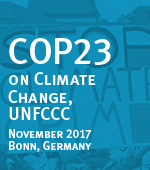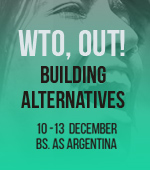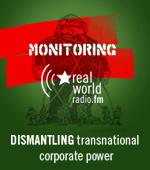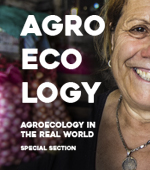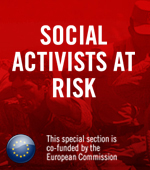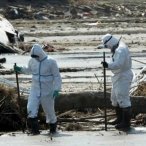
6 September 2011 | News | Climate Justice and Energy
Scary
Serious nuclear contamination in Japan
Download: MP3 (2.8 Mb)
Japanese prime minister, Yoshihiko Noda, will travel this month to the areas the worst affected
by the earthquake and tsunami of March 11 in the northeast of the country, which brought about a
terrible nuclear crisis as a result of the subsequent explosions in Fukushima nuclear central 1, in the neighboring Ibaraki prefecture. The radiation levels are frightening.
Experts warn about a contamination equivalent to tens of atomic bombs like the one thrown by the
United States in the Japanese city of Hiroshima on August 6, 1945, during World War 2.
Europa Press reports that the Japanese prime minister is considering meeting Fukushima’s local
governor, Yuhei Sato, during his visit and inspecting several areas within a 20 kilometer radio.
Noda will also visit the J-Village sports facilities used as a camp to distribute aid to the population.
Meanwhile, former Japanese primer minister, Naoto Kan, who resigned at the end of August,
admitted in an interview that shortly after March 11 he feared that the country’s capital Tokyo
would remain uninhabitable. The city is nearly 250 kilometers south of Fukushima’s nuclear plant
1. He told newspaper Tokyo Shimbun “Scenes of a deserted Tokyo, without a single person in the
street, crossed my mind”. Kan acknowledged that evacuating the 30 million Tokyo residents would have been impossible so he assessed that nuclear energy is a too dangerous option.
The former primer minister resigned amid scrutiny over his management of the country’s largest
crisis since World War 2. He handed in his resignation after three key laws were passed, including one to double the use of clean energies in the country by 2020 and a budget for the reconstruction of the areas affected by the earthquake and tsunami.
Hundreds of Japanese and international social organizations have denounced the high radiation
levels the population is exposed to in the affected areas. They have especially requested to lower the amount of radiation considered acceptable for the population, especially for children (from 20 to 1 milisieverts a year) and to take the necessary measures to reduce exposition levels.
On August 17 several Japanese civil society organizations submitted a document to the United
Nations High Commissioner for Human Rights, Navanethem Pillay, to alert about children’s rights violations in Fukushima. Some of the signing organizations include The Fukushima Network for Saving Children from Radiation, FoE Japan (International Environmental NGO), Green Action and Greenpeace.
A press release issued by Friends of the Earth Japan reads “The children of Fukushima have the
same right as all other children in Japan to live a life free from unnecessary, preventable radiation exposure. We urgently request that the Office of the High Commissioner for Human Rights/ OHCHR come to Japan to investigate this matter.”
Spanish newspaper El Pais reported that on August 2, Tokyo Electric Commpany (TEPCO),
responsible for Fukushima 1, registered the highest radiation levels in the area after the nuclear
accident. The company found 10 sieverts (10,000 milisieverts) of radioactivty that day. The
Japanese Minister of Science says that if a person were exposed to those radiation levels he/she
would die in one or two weeks.
In mid August Doctor Tatsuhiko Kodama, head of the Radioisotope Center at the University of
Tokyo, who has been measuring the country’s radiation levels, provided alarming figures of the
nuclear contamination in Fukushima 1.
Al Jazeera reported that Kodama said the total radiation released over more than five months is
equal to 29 Hiroshima-type atomic bombs.
Photo: http://www.ecologiaverde.com



